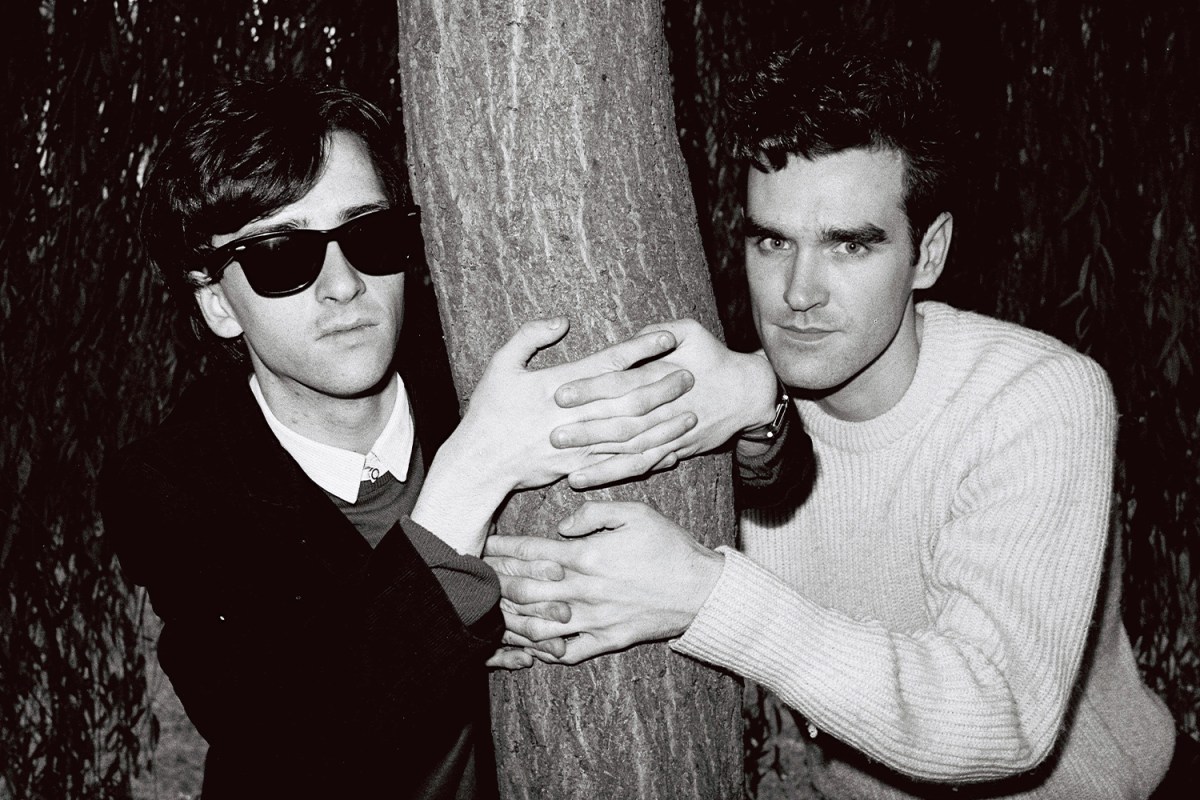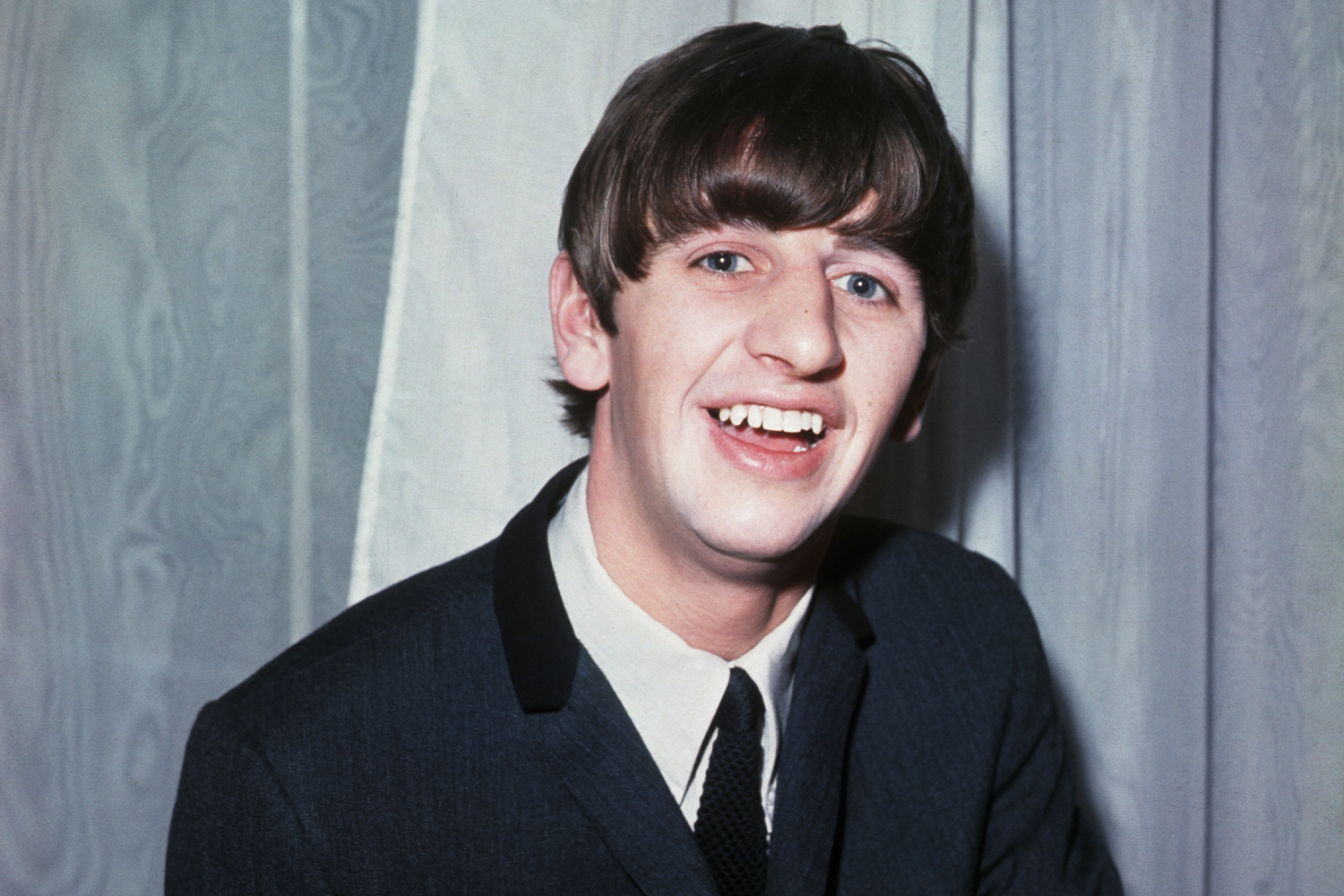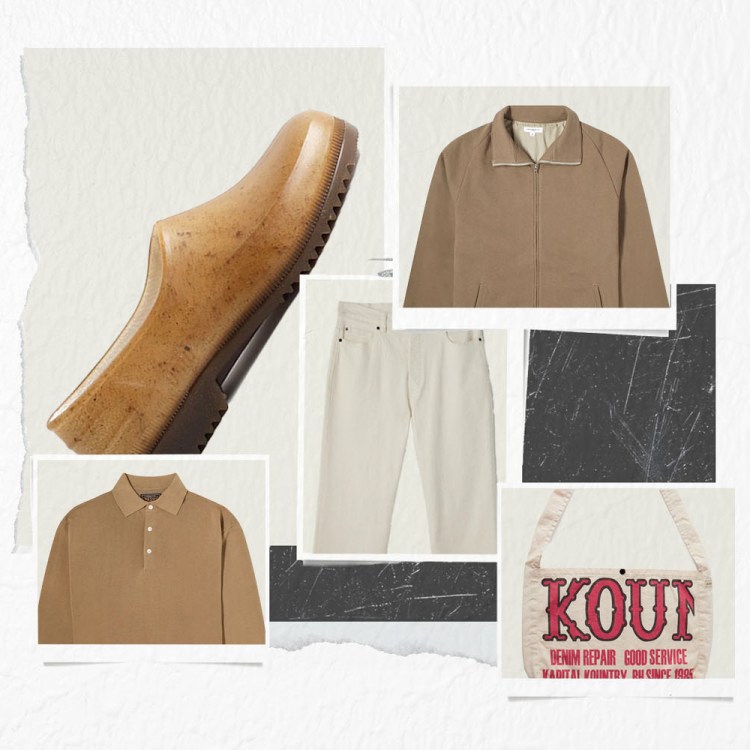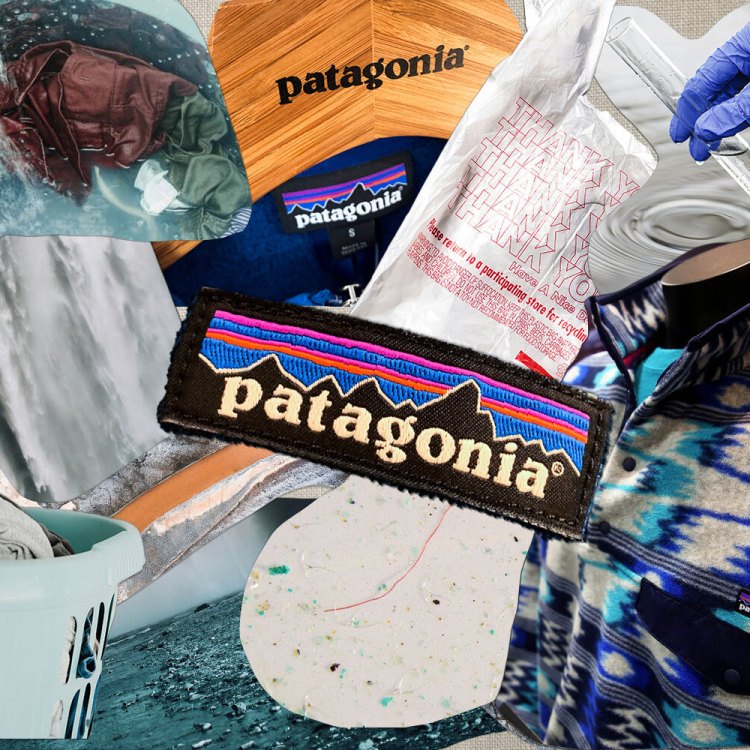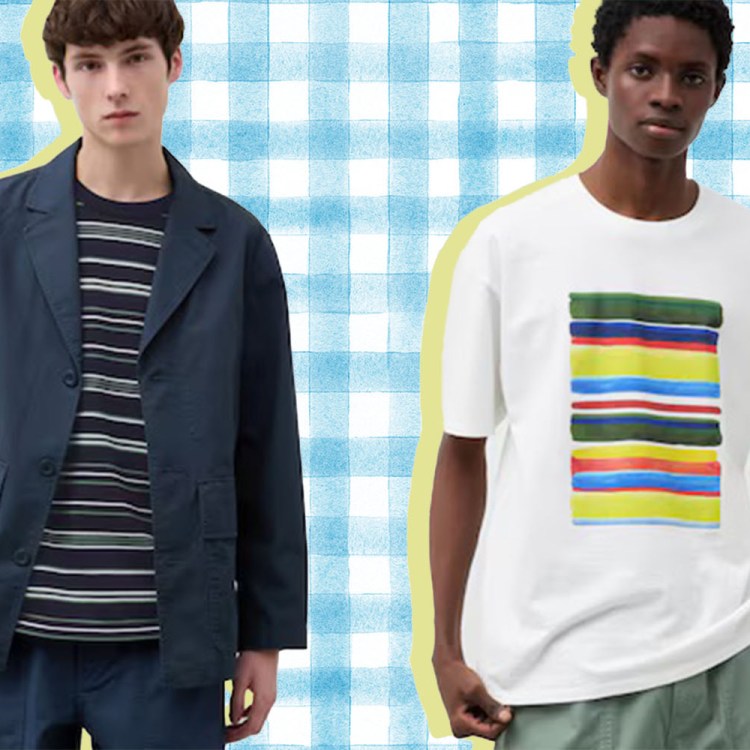In 1984, during the rise of The Smiths’ music career, frontman Morrissey was asked about clothes. His opinion wasn’t so much centred on garments themselves, but rather, their impact: “If you become popular and people begin to mimic you, how you dress can seem to be something that’s quite manufactured and contrived, which of course it never ever was.”
His words ring true for the sensibilities of The Smiths, because it was their unapologetic honesty (communicated, in a musical sense, through Morrissey’s socially critical lyrics) that opened the doors to global success from their bleak home of Manchester. That success emerged strongly here in the States, as invasive doubt pulsed through the mindsets of young and confused generations. For that reason, The Smiths remain relevant today, so much so that their impact is being explored in a brand new film by Stephen Kijak titled Shoplifters of the World.
Set in the summer of 1987, the drama follows a group of four friends who embark on a night of severe partying to mourn the sudden break up of The Smiths. Sad, hopeless and seeking comfort from a band who appeared to follow the exact same line of thought, their exploration is being released on screens today — so it’s a good time to delve into the origins of what made The Smiths so very appealing.
To come back to Morrissey’s musings on clothes, the concept of manufacturing an image was never considered by The Smiths. Why? Because to do so would be to reject the artistic movement which lay at the very core of their conception: Kitchen Sink Realism. First rising to prominence through theater, film and television in the late 1950s, Kitchen Sink dramas were characterized by their protruding male protagonists who were unashamed to express a disillusion for modern society. Details of working class livelihoods — from barren housing to filthy pubs — were everywhere, and though it was far from glamorous, it was a new source of creative relatability for much of the British population.
Fast forward twenty years and the evolution of this movement had extended to the music industry thanks to The Smiths. Aside from Morrissey’s lyrics and their uncanny resemblance to Kitchen Sink protagonists, the band’s visual aid fit the bill, too, from film stills on album covers to anti-establishment music videos directed by British filmmaker Derek Jarman. It was natural for The Smiths to document this harsh, humdrum lifestyle because they were smack dab in the middle of it. And so when you look at the way they dressed — plain, off-the-cuff and completely common — there was actually something pretty applaudable in their defiance towards the expected “image” of a band. As a result, they wound up making normalcy look cool.
Now, while we’re not forcing you to step outside and confess your discontent with society (unless this naturally floats your boat), we’re here to tell you that style shouldn’t be driven by a try-hard mentality. For The Smiths, it was a purely instinctive uniform to survive life, so herewith, five of the band’s most reliant garments throughout their career.
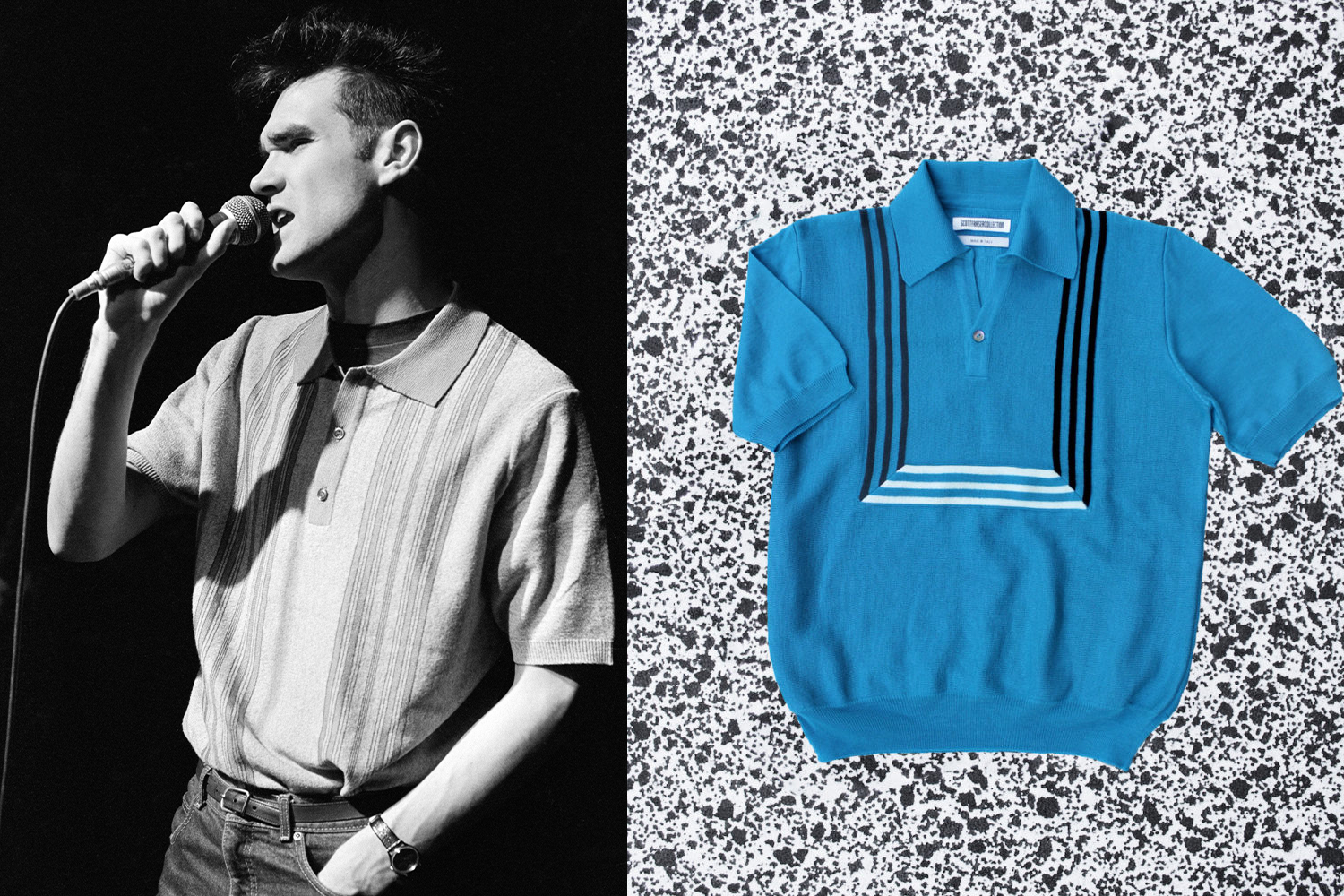
The knitted polo shirt
It may be one of the most basic items in a wardrobe, but if worn with enough grace, the knitted polo shirt can be a serious sign of intellectualism. Pictured here in 1984, Morrissey layered his over a basic t-shirt, tucked it into some selvedge jeans, and he sealed his ensemble with a slim leather belt. Simple and effective, you’re likely to source a similar shirt secondhand, but London based designer Scott Fraser Simpson is a winning point of call for this type of design.
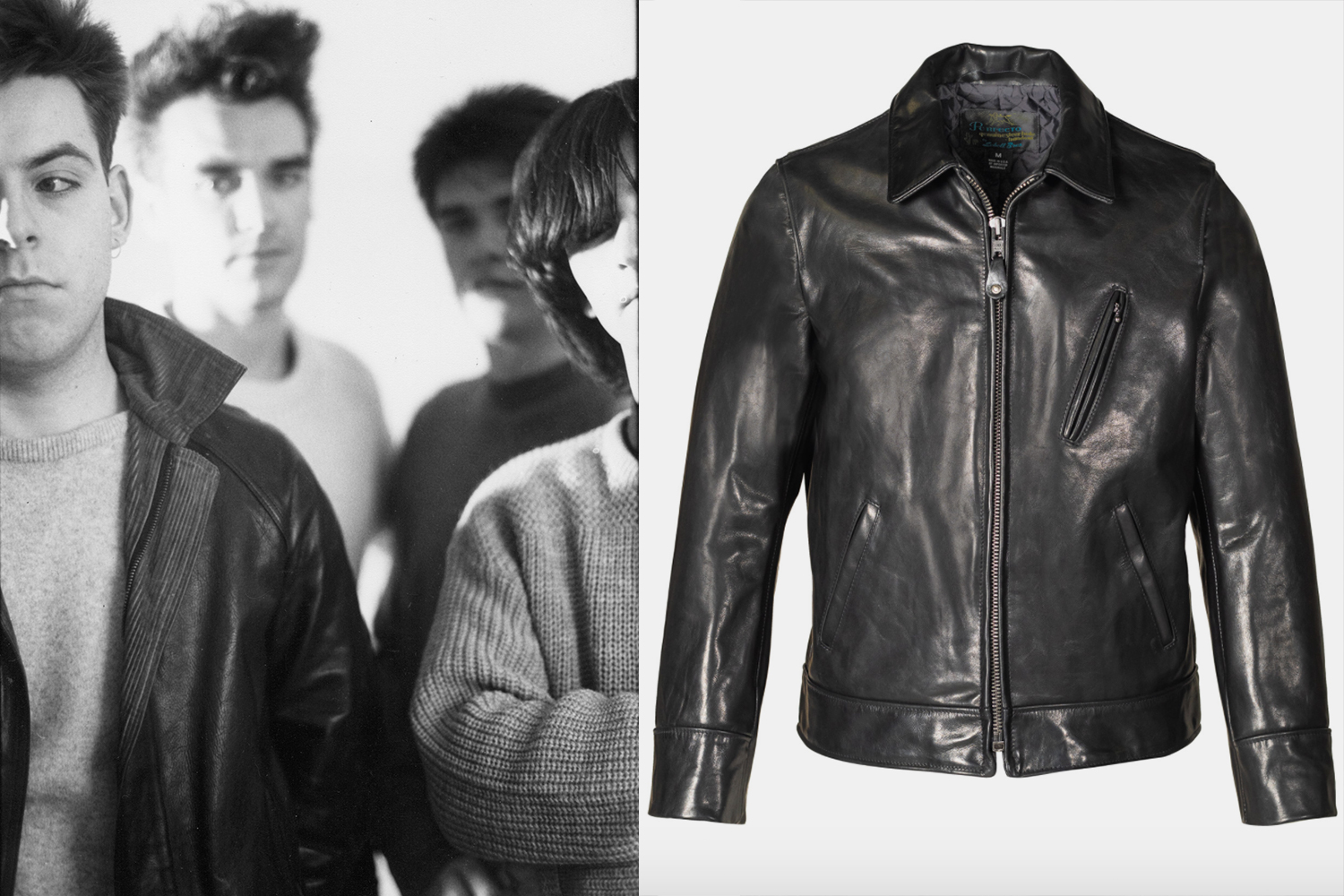
The leather jacket
Is there anything more practical (and classic, might we add) than a leather jacket? The answer would be no for bassist Andy Rourke, who, during this studio shoot circa 1980, topped a crewp-neck jumper and corduroy shirt with a zip-up leather. It was likely thrifted, but it’s definitely not a bad idea to invest in a well-made design, because this is one of those pieces you’ll rely on at any age. Where to get it? At New York’s most famous spot, Schott, of course.
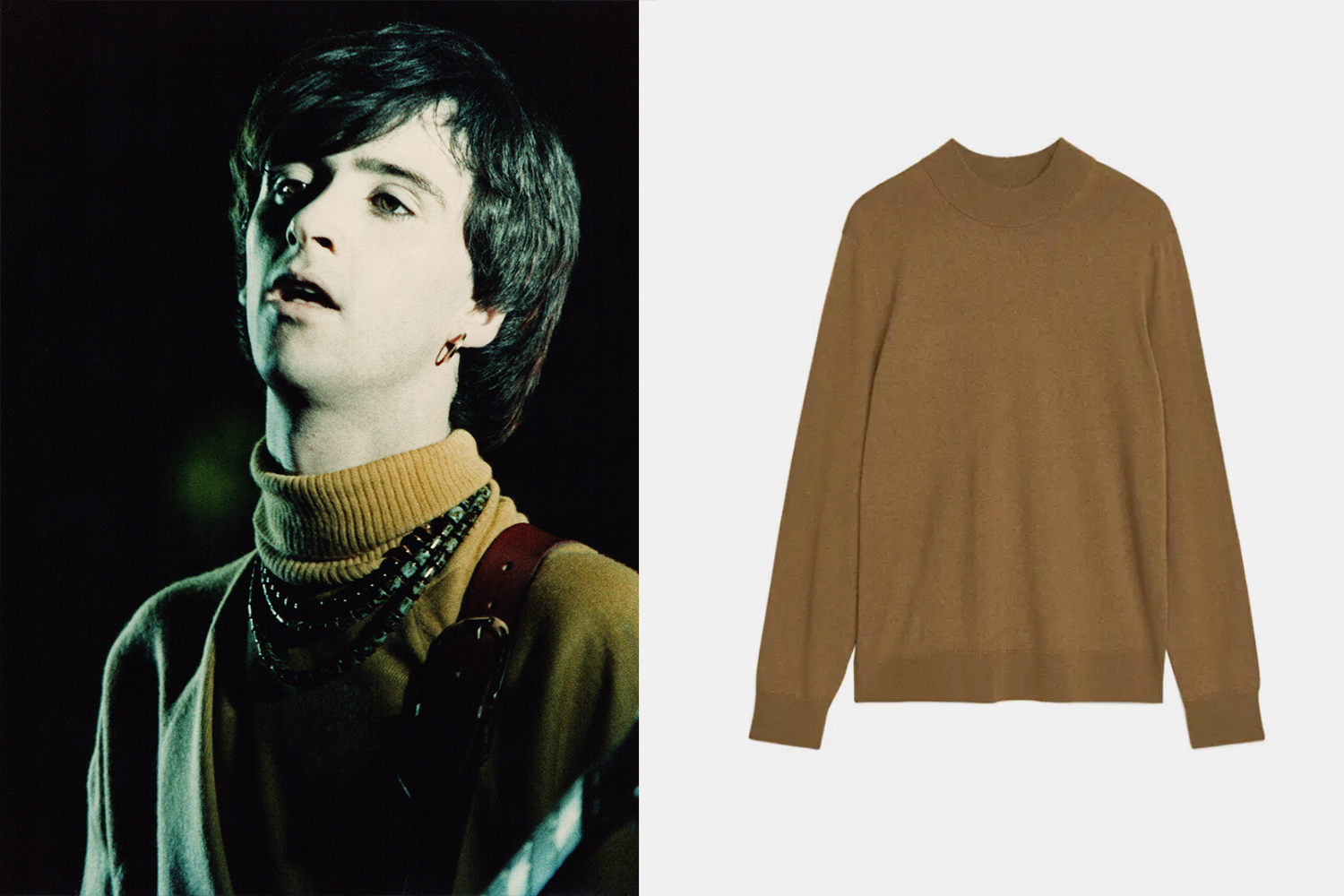
The seasonal ribbed sweater
Spring is well and truly settling in, so now is the time to start thinking about adding some lighter-colored layers to your wardrobe. With Johnny Marr in mind, your best bet for a subtle touch of preppiness is a sun-kissed turtleneck: fixed with a ribbed collar and worn a little baggy for a good old bit of insouciance.
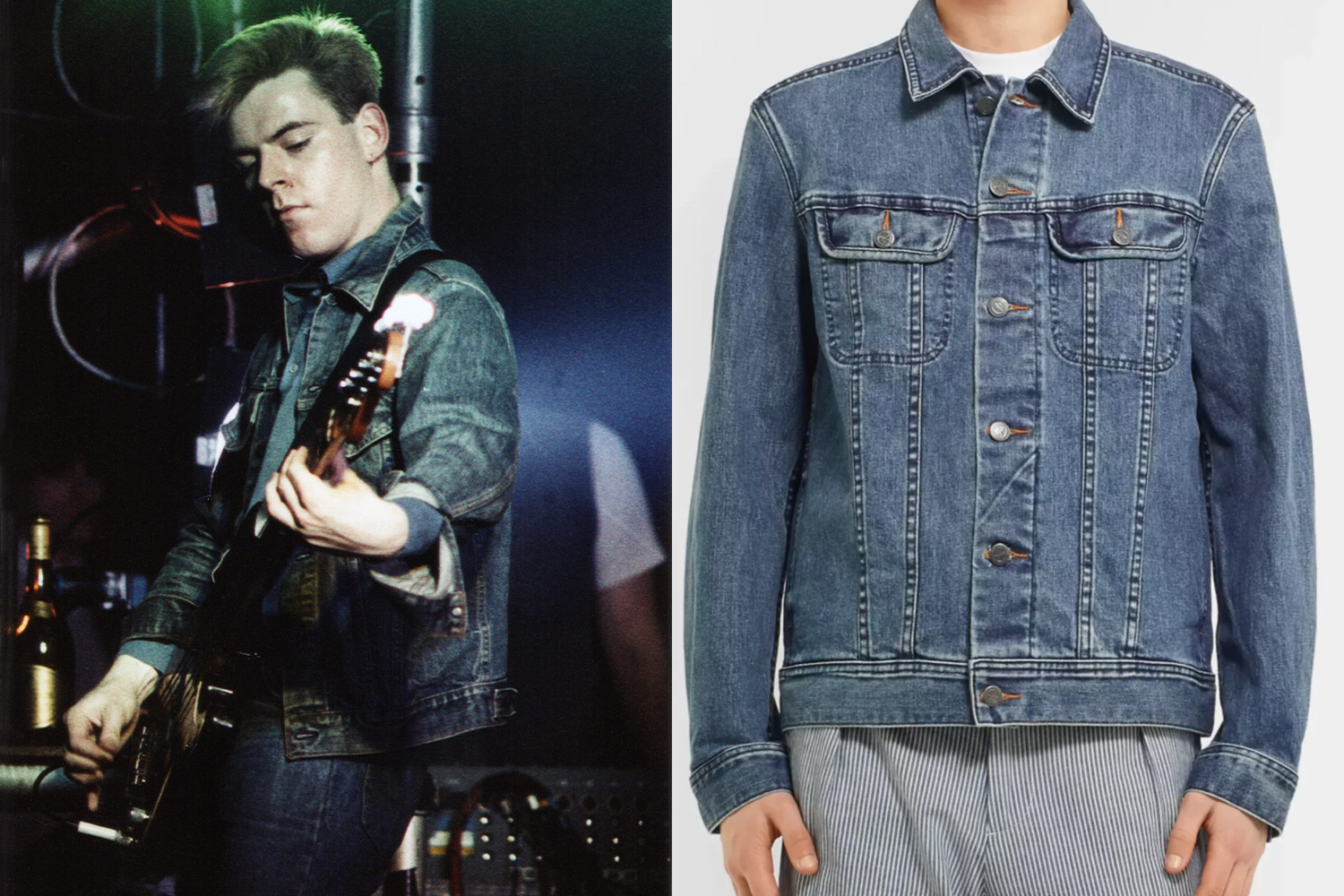
The double denim ensemble
Sure, The Smiths liked to keep things relatively ordinary with their clothes, but that’s not to say that they weren’t capable of making a statement. Pictured here at a 1984 performance in London, Andy Rourke made a swift case for the double denim ensemble — turning up the cuffs of his jacket in a kind of disheveled way but, rest assured, it worked. Imperfection is key to pulling off risky style move, so take note when trying out this one yourself.
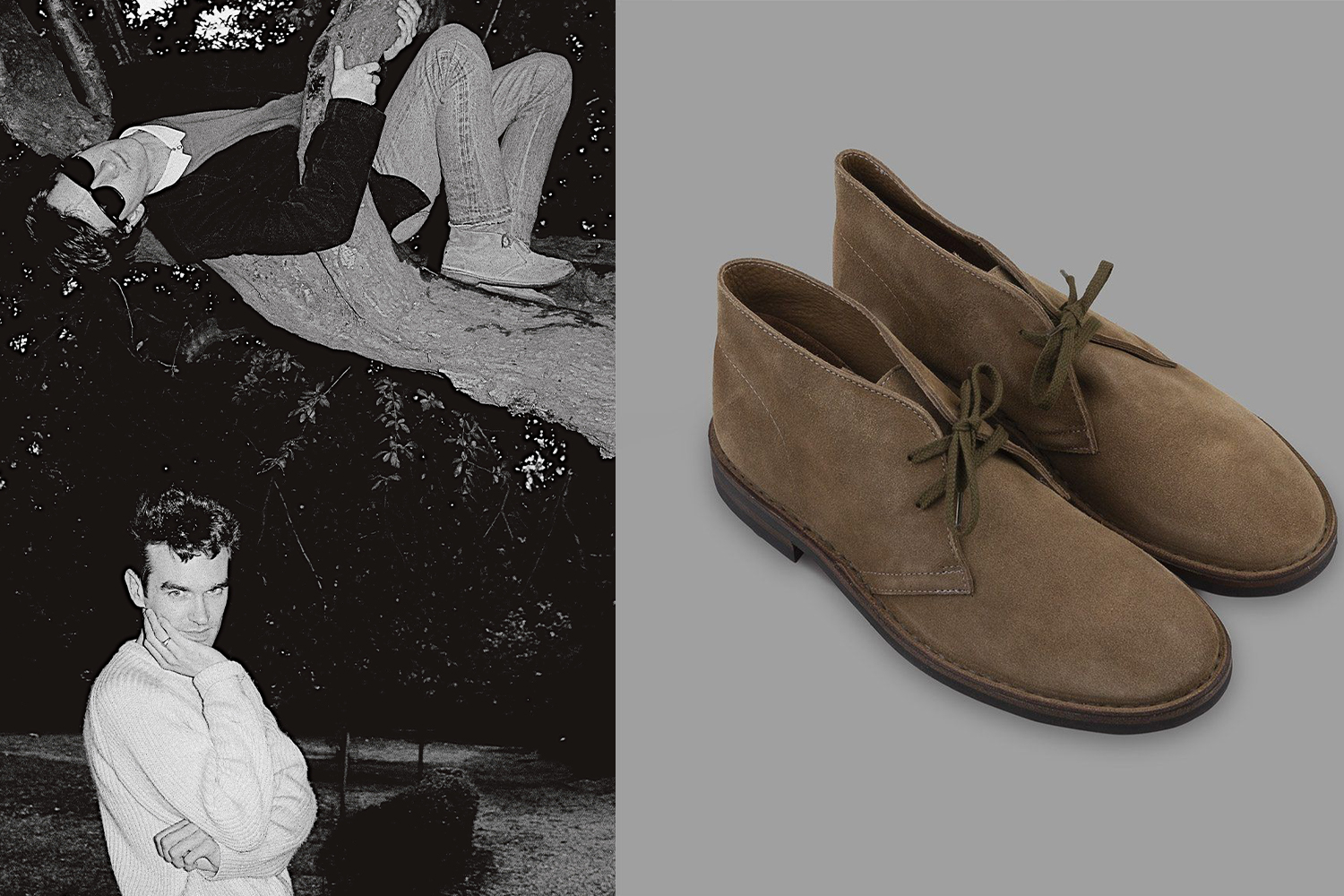
The desert boot
And the final base for these extraordinary outfits? Time and time again, a pair of desert boots. Classic, comfortable and perfect for knocking about on stage, the suede lace-up design was a go-to point of call for all members throughout their career, and forty years on, the sophisticated effect of its practical design hasn’t wavered. Do yourself a favor and invest in a pair from Drake’s for maximum effect.
This article was featured in the InsideHook newsletter. Sign up now.
